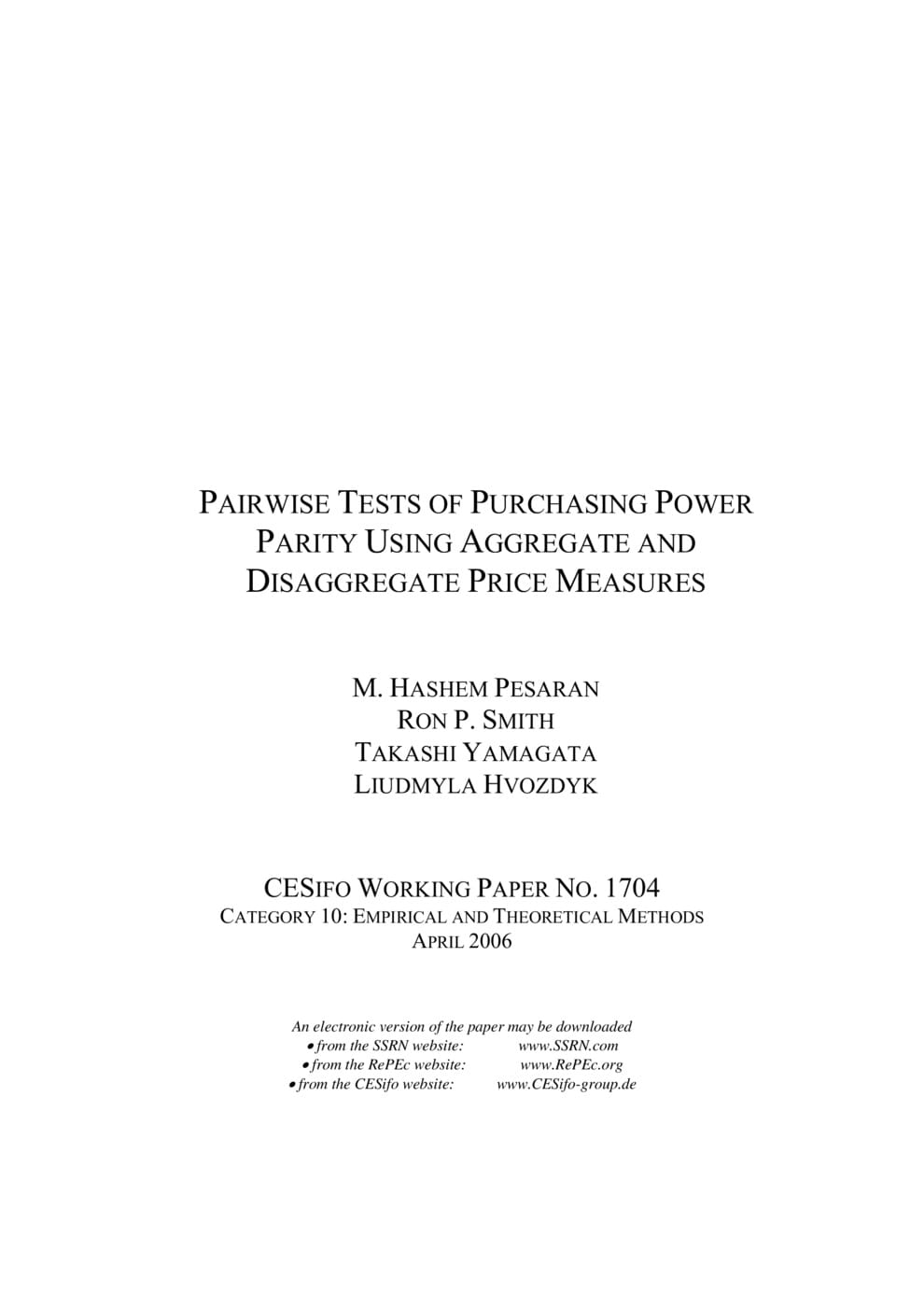Pairwise Tests of Purchasing Power Parity Using Aggregate and Disaggregate Price Measures
CESifo, Munich, 2006
CESifo Working Paper No. 1704

In this paper we adopt a new approach to testing for purchasing power parity, PPP, that is robust to base country effects, cross-section dependence, and aggregation. Given data on N +1 countries, i, j = 0, 1, 2, ..., N, the standard procedure is to apply unit root or stationarity tests to N relative prices against a base country, 0, e.g. the US. The evidence is that such tests are sensitive to the choice of base country. In addition, the analysis is subject to a high degree of cross section dependence which is difficult to deal with particularly when N is large. In this paper we test for PPP applying a pairwise approach to the disaggregated data set recently analysed by Imbs, Mumtaz, Ravan and Rey (2005, QJE). We consider a variety of tests applied to all possible N(N +1)/2 pairs of real exchange rate pairs between the N + 1 countries and estimate the proportion of the pairs that are stationary, for the aggregates and each of the 19 commodity groups. This approach is invariant to base country effects and the proportion that are non-stationary can be consistently estimated even if there is cross-sectional dependence. To deal with small sample problems and residual cross section dependence, we use a factor augmented sieve bootstrap approach and present bootstrap pairwise estimates of the proportions that are stationary. The bootstrapped rejection frequencies at 26%-49% based on unit root tests suggest some evidence in favour of the PPP in the case of the disaggregate data as compared to 6%-14% based on aggregate price series.